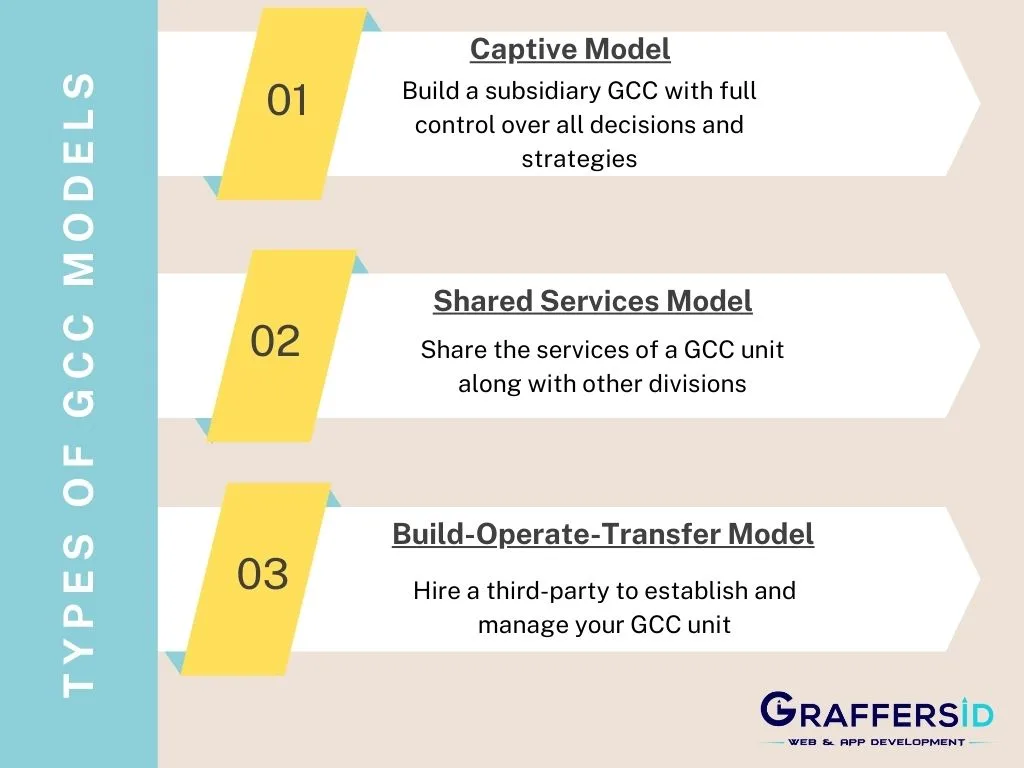Over the last few years, over 150 multinationals have chosen to set up their GCC units in India. These GCCs fulfill a range of services for their parent companies, and they have grown quite sizably in terms of number, headcount, and structure. The GCCs in India have shown consistent performance, coupled with dedication to shared goals which have helped them gain trust from all around the world. Although we are undergoing development, our outsourcing services are highly popular with all the other developed countries. We offer a very skilled pool of talent to choose from at an effective cost. Several other advantages like scalability and flexibility, security, global market expansion, etc. make India the ideal location for setting up your Global Capability Centre. Moving on, we will discuss the various factors that should be considered while setting up a GCC.
Read Also: Why you should hire a GCC for your IT needs?
Factors to be considered while setting up your GCC in India-
-
Feasibility Study
– The first step to setting up a GCC is understanding the feasibility. The same can be done by determining the specific services and functions the GCC will deliver, understanding the talent availability in different cities, familiarising yourself with the regulatory and legal requirements, and checking the political stability of the location.
-
Legal and Regulatory Compliance
– If choosing to set up a GCC in India, the company will have to first get registered, following which they will have to get Foreign Direct Investments (FDA) approvals (in case it is a foreign company), and then understand the labor laws that the employer will have to adhere to. This is an important factor to be considered to avoid any sort of risks or hindrances in the future.
-
Talent Acquisition
– With about 1.5 million engineering students graduating annually, India offers a large pool of skilled talent from both tier-1 and tier-2 cities. Hiring the right man for the job is an essential part of the process, with special attention to employee retention and training.
-
Growth potential-
Companies setting up their GCC units in India should thoroughly evaluate the growth potential of the country. In this case, India offers a very high potential for the growth of GCCs as a result of the COVID-19 epidemic, inflation, and geopolitical unrest. Conglomerates everywhere instill immense trust in India for outsourcing and consider it as one of the best locations for getting their IT needs met.
Benefits of having a GCC in India-
India is a very attractive home base for setting up your GCC, with many growth drivers pushing success across various domains. The hired individuals are highly motivated and driven to ensure the success of their parent organizations.
-
A vast pool of talent
– India boasts a high number of skilled IT and Engineering graduates every year, and with a very strong background in these complex domains, companies do not have to worry about the capabilities of the hired talent. The individuals are highly skilled and motivated, and the parent company will not have to micromanage the team or worry about the quality of the work delivered.
-
Effective Costs-
With an abundance of talent and compatible infrastructure, it is much easier and cheaper for companies to set up their GCCs in India. The operating cost of these centres is much lower here as compared to other countries like the US or UK. Apart from this, the salary structure, rent, and favorable exchange rates also contribute to the rising popularity.
-
Government Support-
the Indian government has been very supportive and welcoming for setting up Global Capability Centres in India. To further incentivize the setup of GCCs, the government has set up Special Economic Zones (SEZs) which provide a range of tax benefits and other advantages. The government has also put some rules in place to encourage innovation and R&D, which has aided Indian captive centers in creating state-of-the-art services and technologies. Some other initiatives include-
- Engineering R&D- states have established engineering R&D strategies, innovation hubs, and tech clusters to capitalize on India’s current IT service capabilities and engineering skill pool.
- Production Linked Incentive- In 2020–21, the Production Linked Incentive (PLI) program was introduced in 14 important industrial sectors, further bolstering the Make in India campaign.
- Lower restrictions on FDIs- The government has implemented a liberal and open policy to draw in foreign capital, allowing FDI to enter most sectors automatically.
-
Scalability and flexibility-
India offers a vast pool of talent with individuals constantly seeking new opportunities, which allows the parent organizations to easily scale up whenever needed, and that too at effective costs. The time gap is minimal, and they can find new talent almost immediately with the benefit of hiring the team remotely.
-
Operational Excellence-
GCCs in India promote operational excellence by using standardized procedures and the very best practices. This streamlines workflow, improves efficiency, and increases productivity across several tasks, resulting in greater success.
Aside from these factors, India fosters a thriving start-up ecosystem, growing infrastructure, and steady growth in many fields, which further enhances the operation of different organizations. GCCs have been able to harness India’s skill pool, cost-effectiveness, and supportive government regulations to supply high-quality services to its clients across the globe. Global capability centers in India are anticipated to continue to be crucial to the economic development of the nation because of the rising need for outsourcing and the expansion of the IT sector.
GCC Models

Parent companies can adopt any of the three GCC models discussed below-
1.Captive Model-
under this model, the GCC will act as a subsidiary to the parent organization, with full control of all the operations, decisions, and strategies in their hands. These types of GCCs are usually established in offshore locations which helps the company take advantage of effective costs and talent of the location. This model, however, has a higher initial investment in terms of money and time as an entire new subsidiary needs to be set up in an entirely different location, requiring the parent organization to go through a time-consuming procedure. This model is ideal for large enterprises that do not have time or monetary restrictions and need full control over their unit.
2.Shared Services Model-
this model allows the different divisions of the parent company to share the services provided by the Global Capability Centre. These services can range from IT to HR, offering consistency and uniformity within the organization. However, this model has to take into consideration the complex demand for management of different departments which requires careful resource allocation to avoid any bottlenecks. Entreprises with different departmental needs in need of similar or consistent services can opt for this setup.
3.Build-Operate-Transfer Model –
this model entails a third party establishing and managing the GCC on behalf of the parent company. With time, the parent company can take ownership of the GCC. This model allows the parent business to exploit the service provider’s skills in creating and operating the GCC before acquiring full management. However, the parent company has to fully depend on the third-party initially to set up the centre, and at the time of the handover, all knowledge and operations should be disclosed properly to the parent company to ensure continuity and uniformity.
Projected Growth of GCCs in India
Between FY19 and FY24, the number of GCCs has increased to 1700, which puts India at the top of the list. In these 5 years, we saw the creation of almost 400 GCCs, bringing the CAGR at 5%. Along with the existing GCCS, the new ones have also spread across various locations within the country, resulting in the creation of about 3000 GCC units in the same time frame. Some of the prominent companies that set up/expanded during this time include Airbnb, Kraft Heinz, H&M, Truecaller, Github, etc.
The expected revenue generation from GCCs is expected to touch $121 billion by the year 2030, increasing by almost 100% from $64 billion in 2024. The revenue inflow will be accompanied by the creation of many new job opportunities, making India a global house for GCCs of many MNCs. India’s GCCs are not only players, but leaders in the innovation race. It is a movement in trust and worldwide image, aided by a symbiotic ecosystem of entrepreneurs, service providers, and the government.
Conclusion
Global Compatibility Centres are no longer seen as simple back office assistors to international corporations, rather are viewed as a critical step towards developing global solutions and generating new income streams. Some ways by which India can further boost the growth of GCCs through simplifying the entry process, building trust and securing data privacy, drawing out a strategic roadmap for those who are exploring setting up a GCC in India, empowering and upskilling the talent, and laying more focus on cultural integration and inclusivity. All these factors will behave as catalysts in the journey of GCC growth in India.
At GraffersID, we can help you set up your GCC unit at effective prices while making sure that you have a smooth experience. As a client, you will never have to worry about finding new talent or training them, or think twice about any security breaches. We have a team of developers ready to be deployed within 24 hours after consultation, with 10% developers available on the bench in case you need any replacements. The developers are assigned company devices that have built-in software and hardware restrictions, curbing any sort of data leaks. Contact us today to learn more about our services and set up a GCC to ensure your company’s growth and success!




